Renewable Resources and Green Energy Solutions - A Guide
In today's world, the conversation around energy is evolving rapidly. With the looming threats of climate change and environmental degradation, the shift towards renewable resources and green energy solutions has never been more critical. This guide explores the myriad ways these sustainable practices can help combat the adverse effects of climate change while promoting a healthier planet for future generations.
So, what exactly are renewable resources? In simple terms, they are natural resources that can be replenished over time, unlike their non-renewable counterparts, such as fossil fuels. Renewable resources include sunlight, wind, water, and biomass, all of which can be harnessed to produce energy without depleting the Earth's natural reserves. The significance of these resources in energy production cannot be overstated. As we witness the adverse effects of climate change, turning to renewable resources offers a sustainable solution that benefits both the environment and society.
When we talk about renewable energy, it’s essential to understand the various types available. Each type has its unique benefits and challenges, making them suitable for different applications. Here’s a brief overview:
- Solar Energy: Harnesses sunlight to generate electricity or heat.
- Wind Energy: Utilizes wind to produce electricity.
- Hydro Energy: Generates power through flowing water.
- Geothermal Energy: Extracts heat from the Earth’s core.
- Biomass Energy: Converts organic materials into energy.
Among these, solar energy stands out as one of the most abundant and widely adopted renewable energy sources globally. It harnesses sunlight to generate electricity or heat, providing a clean and sustainable energy solution for homes and businesses alike.
Photovoltaic systems are perhaps the most recognized form of solar technology. They convert sunlight directly into electricity using solar panels. Imagine your roof being a mini power plant, generating clean energy that powers your home. This not only reduces electricity bills but also contributes to a greener planet.
On the other hand, solar thermal systems capture sunlight to produce heat. This heat can be used for residential heating, hot water, and even electricity generation. Think of it as a solar oven, using the sun's energy to keep your home cozy and your water warm.
Moving on to wind energy, this renewable source utilizes the kinetic energy of wind to generate electricity. Wind turbines, often seen dotting the landscape, are the workhorses of this technology. As the wind turns the blades, energy is generated, making it a rapidly growing and efficient renewable energy option. It’s like capturing the breath of nature and turning it into power!
Adopting green energy solutions comes with a plethora of advantages. For starters, these solutions significantly reduce greenhouse gas emissions, which is crucial in combating climate change. By transitioning to renewable energy, we can achieve greater energy independence, lessening our reliance on imported fuels and enhancing national security.
The environmental benefits are substantial. Green energy solutions contribute to cleaner air and water, which in turn leads to healthier ecosystems and communities. By lowering carbon footprints, we can mitigate the effects of climate change, making the world a better place for future generations.
Moreover, the transition to green energy is not just an environmental imperative; it also presents significant economic opportunities. The renewable energy sector creates jobs in manufacturing, installation, and maintenance, fostering economic growth and innovation. It’s a win-win situation where we protect our planet while boosting our economy!
However, the road to widespread adoption of renewable energy is not without its challenges. There are technological, financial, and regulatory hurdles that need to be addressed.
While renewable technologies are advancing at a breakneck pace, limitations in efficiency, storage, and grid integration still pose challenges for broader adoption. For instance, how do we store solar energy generated during the day for use at night? Solving these puzzles is essential for maximizing the potential of renewable resources.
Financial barriers are another significant hurdle. High initial investment costs and fluctuating market conditions can deter individuals and businesses from adopting renewable energy solutions. It’s crucial that supportive policies and financing options are put in place to encourage this transition.
Looking ahead, the future of renewable energy is bright. Emerging technologies and trends are set to revolutionize how we harness and utilize these resources. Innovations in energy storage, smart grids, and energy efficiency will play a pivotal role in shaping the sustainable energy landscape.
New advancements are continuously being developed, promising to enhance the efficiency and reliability of renewable energy systems. Imagine a world where your home can automatically adjust its energy consumption based on available renewable energy—this is the future we are heading towards!
Finally, effective policies and regulations are crucial for promoting renewable energy adoption. By incentivizing investments and ensuring a sustainable energy future, we can create a framework that supports the transition to green energy solutions.
Q: What are renewable resources?
A: Renewable resources are natural resources that can be replenished over time, such as sunlight, wind, and water.
Q: Why is renewable energy important?
A: Renewable energy is crucial for reducing greenhouse gas emissions, combating climate change, and promoting sustainable development.
Q: What are the challenges of adopting renewable energy?
A: Challenges include technological limitations, financial barriers, and regulatory hurdles.

Understanding Renewable Resources
When we talk about renewable resources, we're diving into a treasure trove of energy solutions that Mother Nature provides us. Unlike fossil fuels, which are finite and can take millions of years to form, renewable resources are abundant and naturally replenished. Think of them as the gift that keeps on giving! These resources play a crucial role in energy production, allowing us to harness the power of nature without depleting it. They include sources like sunlight, wind, water, and organic materials, each offering unique benefits to our energy landscape.
So, why are renewable resources so important? Well, they help us reduce our reliance on non-renewable resources, which are not only limited but also contribute significantly to climate change and environmental degradation. By shifting our focus to renewable energy, we can help mitigate these negative impacts and pave the way for a more sustainable future. The key difference between renewable and non-renewable resources lies in their availability and environmental impact:
| Resource Type | Availability | Environmental Impact |
|---|---|---|
| Renewable | Abundant and replenishable | Low to negligible |
| Non-Renewable | Finite and exhaustible | High and detrimental |
As we explore the world of renewable resources, it's essential to recognize their significance in our lives. Every time we turn on a solar panel or harness wind energy, we are making a conscious choice to support sustainable practices. It’s like planting a seed for future generations, ensuring they inherit a cleaner, healthier planet. Moreover, the transition to renewable energy sources can lead to energy independence, reducing our vulnerability to fluctuating fossil fuel prices. Imagine a world where we are not at the mercy of oil markets—sounds pretty great, right?
In summary, understanding renewable resources is about recognizing their potential to transform our energy systems and safeguard our environment. By embracing these resources, we are not just making a choice for today; we are investing in a sustainable future where clean energy can thrive. So, the next time you see a wind turbine or a solar panel, remember that they are more than just structures; they are symbols of hope and progress towards a greener world!
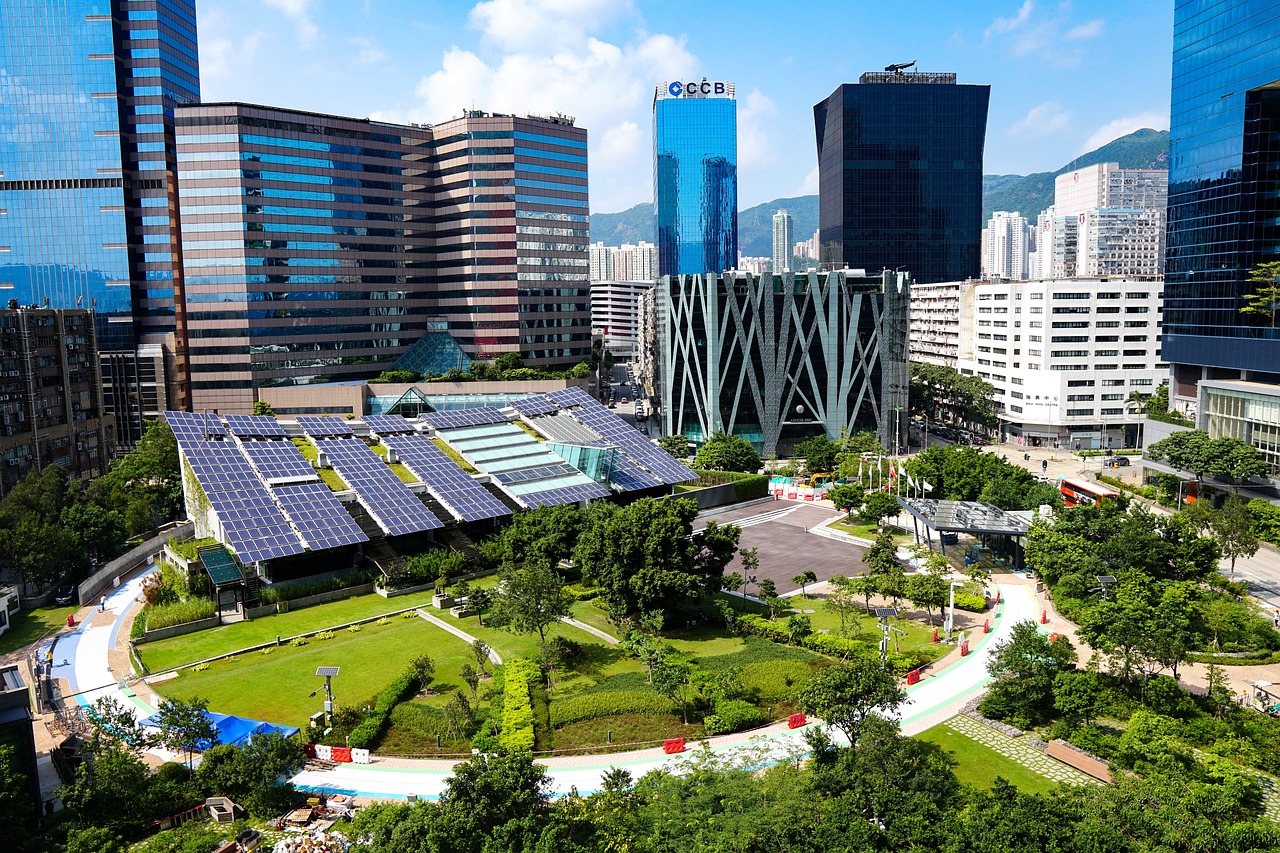
Types of Renewable Energy
When we talk about renewable energy, we're diving into a treasure trove of possibilities that our planet offers. These energy sources are not just a fleeting trend; they are the backbone of a sustainable future. So, what types of renewable energy are out there? Let’s break it down into some of the most prominent categories that are shaping our energy landscape today.
First up is solar energy, which harnesses the power of the sun. This isn't just about sunbathing; it's about capturing sunlight to generate electricity or heat. Solar panels, which are becoming increasingly common on rooftops, are a fantastic way to convert sunlight directly into usable energy. It's like having a little power plant right on your roof!
Next, we have wind energy. Imagine the wind whipping through the trees; that same wind can be captured by wind turbines to produce electricity. Wind energy has been growing rapidly and is one of the most efficient renewable energy options available. The beauty of wind energy lies in its abundance—it's everywhere! Just like the air we breathe, we can harness it to power our homes and businesses.
Another exciting type is hydropower. This method uses flowing water to generate electricity. Think of it like a giant water wheel; as water flows over it, energy is produced. Hydropower is one of the oldest forms of renewable energy and continues to be a significant player in the energy sector. However, it does come with its own set of challenges, such as environmental impacts on aquatic ecosystems.
Geothermal energy is another fascinating option. This involves tapping into the Earth’s internal heat. Imagine the heat rising from a hot spring; that’s geothermal energy at work! It can be used for heating buildings or generating electricity. The beauty of geothermal energy is that it's incredibly reliable and can provide a consistent energy source, regardless of weather conditions.
Lastly, we have biomass energy. This is all about using organic materials, like plants and waste, to produce energy. It’s like recycling on steroids! By converting waste into energy, we not only reduce landfill use but also create a sustainable energy source. This method can be particularly valuable in rural areas where agricultural waste is abundant.
To summarize, here’s a quick comparison of the different types of renewable energy:
| Type of Renewable Energy | How It Works | Benefits | Challenges |
|---|---|---|---|
| Solar Energy | Converts sunlight into electricity using solar panels. | Abundant and widely available. | Intermittent availability (sunshine). |
| Wind Energy | Uses wind turbines to convert wind energy into electricity. | Highly efficient and scalable. | Dependent on wind conditions. |
| Hydropower | Generates electricity from flowing water. | Reliable and established technology. | Environmental impacts on aquatic life. |
| Geothermal Energy | Taps into the Earth's internal heat for energy. | Consistent energy source. | Location-specific; not available everywhere. |
| Biomass Energy | Uses organic materials to generate energy. | Reduces waste and promotes sustainability. | Can compete with food production. |
Each of these renewable energy types plays a crucial role in our quest for a sustainable future. By embracing these technologies, we can reduce our reliance on fossil fuels and move towards a cleaner, greener planet.
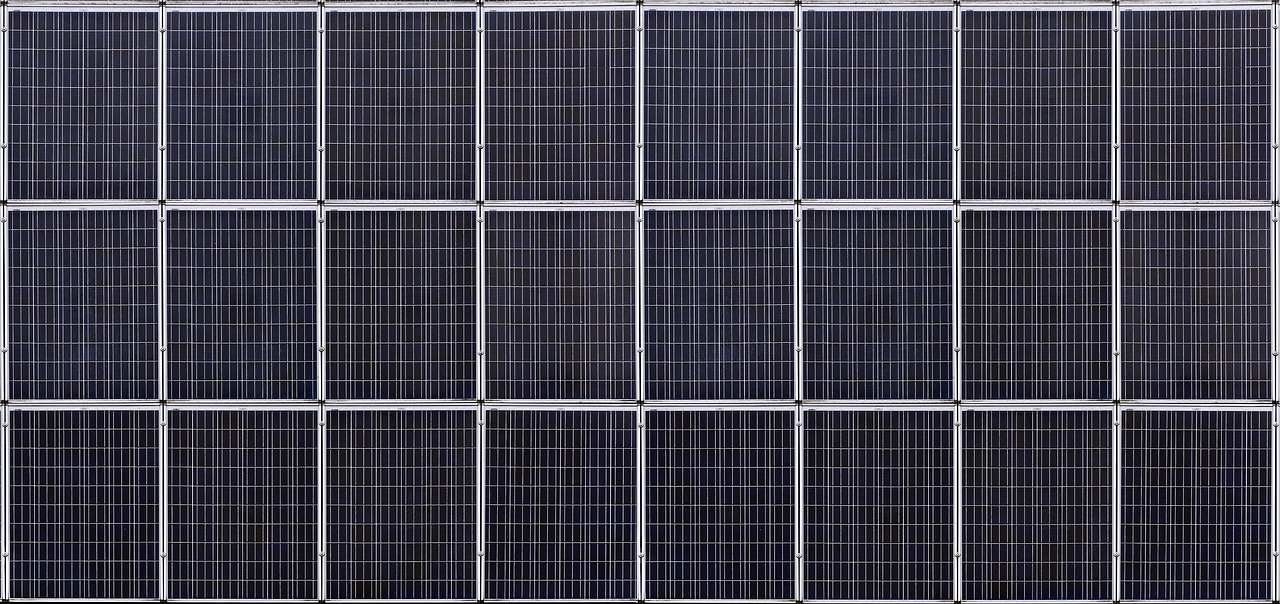
Solar Energy
is one of the most promising and abundant renewable energy sources available today. By harnessing the power of the sun, we can generate electricity and heat without depleting our planet’s resources. Imagine a world where the sun not only brightens our days but also powers our homes and businesses sustainably. This is not just a dream; it’s a reality that is unfolding before our eyes. Solar energy is not only clean but also incredibly versatile, making it an essential component of our transition towards a greener future.
At its core, solar energy works by converting sunlight into usable energy, primarily through two main technologies: photovoltaic (PV) systems and solar thermal systems. Let’s break these down a bit. Photovoltaic systems use solar panels to directly convert sunlight into electricity. These panels are made up of many smaller units called solar cells, which are typically made from silicon. When sunlight hits these cells, it creates an electric current that can be harnessed to power everything from small gadgets to entire homes.
On the other hand, solar thermal systems capture sunlight to produce heat. This heat can be used for various applications, such as heating water for residential use or even generating electricity through steam turbines. Both systems offer unique benefits and can be utilized in different scenarios, depending on the energy needs of the user.
One of the standout features of solar energy is its abundance. The sun emits enough energy in just one hour to power the entire planet for a year! However, despite this vast potential, there are some challenges that we must navigate. For instance, the initial cost of installing solar panels can be significant. Yet, the long-term savings on energy bills and the environmental benefits often outweigh these upfront costs.
To put things into perspective, let’s look at a simple table that outlines some key differences between photovoltaic and solar thermal systems:
| Feature | Photovoltaic Systems | Solar Thermal Systems |
|---|---|---|
| Energy Conversion | Sunlight to Electricity | Sunlight to Heat |
| Primary Use | Electricity Generation | Water Heating, Space Heating |
| Efficiency | 15-22% | 60-90% |
| Installation Cost | Higher Initial Cost | Generally Lower Initial Cost |
As we continue to innovate and improve solar technologies, the future looks bright. With advancements in energy storage solutions, we can now store excess energy generated during sunny days for use during cloudy days or at night. This means that solar energy can become a reliable and consistent power source, reducing our dependence on fossil fuels and enhancing our energy independence.
In conclusion, solar energy is not just a trend; it's a fundamental shift towards a sustainable energy future. By investing in solar technology, we are not only taking a step towards reducing our carbon footprint but also paving the way for a cleaner, greener planet for future generations. So, why not consider making the switch? Every little bit helps, and together, we can harness the power of the sun!

Photovoltaic Systems
Photovoltaic systems are at the forefront of the renewable energy revolution, allowing us to harness the abundant energy of the sun and convert it into electricity. Imagine a world where sunlight is not just a source of warmth but also a powerful tool for generating electricity. That’s the promise of photovoltaic technology! These systems use solar panels made up of many solar cells that capture sunlight and transform it into usable energy. This process is not only clean and sustainable but also incredibly efficient, making it an attractive option for both residential and commercial applications.
The beauty of photovoltaic systems lies in their simplicity and versatility. They can be installed on rooftops, integrated into building designs, or even deployed in large solar farms. This flexibility allows homeowners to reduce their electricity bills significantly while contributing to a greener planet. But how exactly do these systems work? When sunlight hits the solar cells, it excites electrons, creating an electric current. This current can then be used immediately, stored in batteries for later use, or fed back into the grid. It’s like having a mini power plant right on your roof!
One of the major benefits of photovoltaic systems is their scalability. Whether you want to power a small home or an entire community, these systems can be tailored to meet specific energy needs. Additionally, advancements in technology have led to the development of more efficient solar panels that can capture and convert a higher percentage of sunlight into electricity. For instance, high-efficiency panels can achieve conversion rates of over 20%, meaning more energy production from the same amount of sunlight.
However, like any technology, photovoltaic systems come with their own set of challenges. The initial cost of purchasing and installing solar panels can be daunting for many. Yet, it’s essential to consider this as an investment rather than just an expense. Over time, the savings on energy bills can offset the initial outlay, and with various government incentives and financing options available, the barrier to entry is gradually lowering. Furthermore, the environmental benefits of using solar energy cannot be overstated; by choosing photovoltaic systems, you’re not just saving money but also reducing your carbon footprint significantly.
In summary, photovoltaic systems represent a shining beacon of hope in our quest for sustainable energy solutions. They empower individuals and businesses to take control of their energy consumption while contributing to a cleaner, greener future. The more we invest in and adopt this technology, the closer we get to a world powered by renewable resources.
- What are photovoltaic systems?
Photovoltaic systems are solar energy systems that convert sunlight into electricity using solar panels made up of solar cells.
- How do photovoltaic systems work?
They work by capturing sunlight, which excites electrons in the solar cells, creating an electric current that can be used or stored.
- Are photovoltaic systems expensive?
While the initial investment can be high, the long-term savings on energy bills and available incentives make them a worthwhile investment.
- Can photovoltaic systems work in cloudy weather?
Yes, photovoltaic systems can still generate electricity on cloudy days, although their efficiency may be reduced.
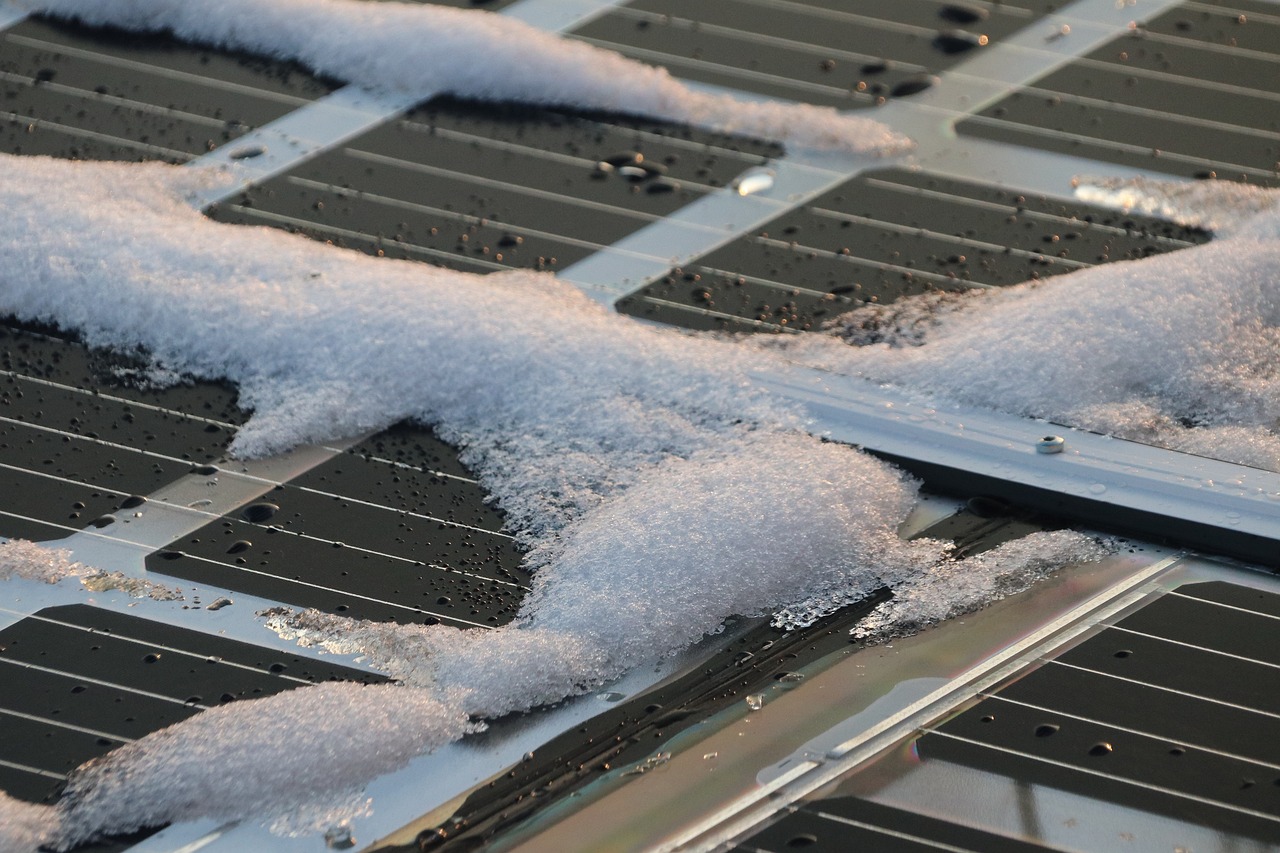
Solar Thermal Systems
Solar thermal systems are fascinating technologies that capture the sun's energy to produce heat, providing an efficient and sustainable solution for various applications. Unlike photovoltaic systems that convert sunlight directly into electricity, solar thermal systems focus on harnessing solar energy for heating purposes. Imagine being able to heat your home or water using nothing but the sun's rays—it's not just a dream; it's a reality that many homeowners and businesses are embracing today!
These systems work by using solar collectors, which are typically installed on rooftops or in open areas where they can receive maximum sunlight. The collectors absorb sunlight and convert it into heat, which is then transferred to a fluid—usually water or a special heat-transfer liquid. This heated fluid can be used for a variety of purposes, including:
- Residential heating, keeping your home cozy during the cold months.
- Heating water for showers, dishwashing, and other household needs.
- Swimming pool heating, allowing for comfortable swims even in cooler weather.
- Industrial processes, where heat is needed for manufacturing and production.
One of the most significant advantages of solar thermal systems is their efficiency. They can achieve higher temperatures than photovoltaic systems, making them particularly useful in applications where heat is the primary requirement. For instance, in regions with abundant sunlight, solar thermal systems can significantly reduce reliance on fossil fuels, leading to lower energy bills and a reduced carbon footprint.
However, like any technology, solar thermal systems have their challenges. The efficiency of these systems can vary based on geographic location, seasonal changes, and the specific design of the system. Additionally, initial installation costs can be a barrier for some homeowners. Yet, many governments and organizations offer incentives and rebates to help offset these costs, making solar thermal systems more accessible.
In conclusion, solar thermal systems are a vital component of the renewable energy landscape. They not only provide a sustainable way to meet heating needs but also contribute to broader efforts to combat climate change. As technology continues to advance, we can expect even more efficient and affordable solar thermal solutions to emerge, paving the way for a greener future.
Here are some common questions about solar thermal systems:
- What is the difference between solar thermal and photovoltaic systems? Solar thermal systems focus on heating applications, while photovoltaic systems convert sunlight into electricity.
- How much can I save on energy bills with a solar thermal system? Savings vary based on energy usage, system size, and local energy prices, but many users report significant reductions in their heating costs.
- Are solar thermal systems suitable for all climates? While they perform best in sunny climates, solar thermal systems can still be effective in less sunny areas, especially with proper system design and orientation.
- What maintenance is required for solar thermal systems? Maintenance is generally minimal but includes periodic cleaning of the collectors and checking fluid levels to ensure optimal performance.

Wind Energy
Wind energy is like capturing the breath of the earth; it’s a potent and natural force that can be transformed into clean electricity. As the wind sweeps across the landscape, it carries with it the potential to power our homes, businesses, and even entire cities. This renewable energy source is rapidly gaining popularity, and for good reason. With advancements in technology and a growing awareness of environmental issues, wind energy is becoming one of the leading options in the quest for sustainable energy solutions.
At its core, wind energy relies on the kinetic energy produced by moving air. When the wind blows, it turns the blades of a wind turbine, which then drives a generator to produce electricity. It’s a simple yet effective process that has been harnessed for centuries, from ancient sailing ships to modern wind farms. But what makes wind energy so appealing today?
First and foremost, wind energy is incredibly abundant. In fact, the potential for wind energy generation is vast, with estimates suggesting that the global wind energy capacity could be increased significantly. According to the Global Wind Energy Council, the total installed wind capacity worldwide reached over 743 GW in 2020, and this number continues to grow. With the right investments and technology, harnessing even a fraction of this potential could meet a substantial portion of our energy needs.
Moreover, wind energy offers several environmental benefits. Unlike fossil fuels, wind energy generation does not produce greenhouse gas emissions or air pollutants. This means that by investing in wind energy, we can significantly reduce our carbon footprint and combat climate change. Additionally, wind farms can be built on existing agricultural land, allowing for dual land use without compromising food production. This coexistence is a win-win for both energy generation and agriculture.
However, like any energy source, wind energy is not without its challenges. One of the most significant hurdles is the intermittency of wind. Wind doesn’t blow consistently, which can lead to fluctuations in energy production. To address this, advancements in energy storage technologies and grid management are crucial. By developing better battery systems and smart grids, we can store excess energy generated during windy periods and distribute it when demand is high.
Another concern is the impact on wildlife, particularly birds and bats that may collide with turbine blades. To mitigate this, ongoing research and development focus on creating smarter turbine designs and strategically placing wind farms away from critical habitats. The goal is to balance energy needs with environmental stewardship, ensuring that our pursuit of clean energy doesn’t come at the expense of biodiversity.
In summary, wind energy stands as a beacon of hope in our transition to a sustainable future. Its ability to generate clean, renewable energy while reducing our reliance on fossil fuels makes it an essential component of our energy strategy. As technology continues to evolve, and as we confront the pressing challenges of climate change, wind energy will undoubtedly play a pivotal role in shaping a cleaner, greener world.
- What is wind energy? Wind energy is the process of converting wind into electricity using wind turbines.
- Is wind energy renewable? Yes, wind energy is a renewable resource as it is generated from the natural movement of air.
- How does wind energy impact the environment? Wind energy has a low environmental impact compared to fossil fuels, producing no greenhouse gas emissions during operation.
- What are the challenges of wind energy? The main challenges include intermittency, impact on wildlife, and the need for improved energy storage solutions.

Benefits of Green Energy Solutions
When we talk about green energy solutions, we’re not just discussing a trend; we’re diving into a revolution that offers a myriad of benefits for our planet and our communities. The transition from fossil fuels to renewable resources is like switching from a dusty, old car to a sleek, new electric vehicle. It’s cleaner, more efficient, and ultimately, it’s paving the way for a sustainable future. So, what exactly are the benefits of embracing green energy? Let’s break it down.
First and foremost, one of the most significant advantages of green energy solutions is the reduction in greenhouse gas emissions. Traditional energy sources, like coal and oil, release a plethora of harmful gases into the atmosphere, contributing to climate change. In contrast, renewable energy sources such as solar, wind, and hydroelectric power produce little to no emissions. This shift not only helps in combating climate change but also leads to cleaner air and water, creating a healthier environment for all living beings.
Moreover, adopting green energy solutions fosters energy independence. Many countries rely heavily on imported fossil fuels, which can lead to economic vulnerabilities and geopolitical tensions. By investing in renewable energy, nations can harness their own resources—like sunlight, wind, and water—reducing dependence on foreign energy sources. This not only enhances national security but also stabilizes energy prices, making energy more affordable for consumers.
Let’s not forget about the economic growth that comes with the green energy transition. The renewable energy sector is a burgeoning field that creates numerous job opportunities. From manufacturing solar panels to installing wind turbines, the demand for skilled labor is skyrocketing. According to recent studies, the renewable energy industry has the potential to create millions of jobs globally. This shift not only fuels economic growth but also encourages innovation and technological advancements.
In addition to job creation, green energy solutions can lead to lower energy costs in the long run. While the initial investment in renewable technologies might seem daunting, the operational costs are significantly lower compared to fossil fuels. Once a solar panel is installed, for instance, the sunlight it captures is free! Homeowners and businesses can save a considerable amount on their energy bills, allowing them to invest in other areas of their lives or businesses.
Furthermore, there’s a growing recognition of the social benefits associated with green energy. Communities that adopt renewable energy solutions often experience enhanced quality of life. Clean energy projects can lead to healthier neighborhoods, reduced pollution, and even increased property values. It's like planting a garden; the more you nurture it with sustainable practices, the more it flourishes, providing beauty and resources for everyone.
To sum it up, the benefits of green energy solutions are vast and impactful. They not only contribute to a healthier planet but also promote economic stability and social well-being. It’s a win-win situation that we can’t afford to overlook. As we continue to explore renewable resources, let’s keep in mind that every small step towards sustainability counts. Together, we can create a brighter, greener future for generations to come.
- What are green energy solutions? Green energy solutions refer to energy sources that are renewable and have a minimal negative impact on the environment, such as solar, wind, and hydroelectric power.
- How do green energy solutions help the economy? They create jobs, reduce energy costs, and promote energy independence, leading to overall economic growth.
- Are renewable energy sources reliable? Yes, advancements in technology are making renewable energy sources more reliable and efficient, with energy storage solutions improving stability.
- What can individuals do to support green energy? Individuals can install solar panels, support local renewable energy initiatives, and advocate for policies that promote sustainability.

Environmental Impact
The transition to green energy solutions brings about a profound transformation in our environment, acting as a balm to the wounds inflicted by traditional fossil fuels. One of the most significant benefits of adopting renewable energy sources is the drastic reduction in greenhouse gas emissions. Unlike coal, oil, and natural gas, which release a plethora of harmful pollutants into the atmosphere, renewable resources like solar, wind, and hydroelectric power produce little to no emissions during operation. This shift not only helps to combat climate change but also leads to cleaner air and water, fostering a healthier ecosystem.
Moreover, the reliance on renewable energy contributes to the preservation of biodiversity. Fossil fuel extraction and usage often lead to habitat destruction, oil spills, and water contamination, which devastate local flora and fauna. In contrast, renewable energy projects, when planned and executed responsibly, can coexist with natural habitats, protecting wildlife and promoting ecological balance. For instance, wind farms can be strategically placed in areas that minimize disruption to migratory bird paths, showcasing that sustainability and conservation can go hand in hand.
Another noteworthy aspect of renewable energy is its potential to reduce water usage. Traditional power generation methods, particularly coal and nuclear plants, require vast amounts of water for cooling processes. In contrast, many renewable technologies, such as solar panels and wind turbines, use minimal water, significantly alleviating the strain on our precious water resources. This is particularly crucial in regions facing water scarcity, where every drop counts.
However, it’s essential to acknowledge that the production and installation of renewable energy systems can have environmental impacts. For example, the manufacturing of solar panels involves the use of hazardous materials, and wind turbines can pose threats to bird populations if not properly sited. Therefore, while the overall impact of green energy is overwhelmingly positive, it is imperative that we approach the development of renewable resources with a mindful and balanced perspective. Sustainable practices in the lifecycle of renewable technologies must be adopted to ensure that we are not merely shifting the burden from one environmental issue to another.
In conclusion, the environmental impact of renewable energy solutions is largely beneficial, offering a pathway to a cleaner, healthier planet. By reducing emissions, preserving biodiversity, and conserving water, these solutions not only address the pressing challenges of climate change but also pave the way for a sustainable future. As we continue to innovate and improve these technologies, the potential for a greener planet becomes increasingly attainable.
- What are renewable resources? Renewable resources are natural resources that can be replenished naturally over time, such as solar, wind, and hydro energy.
- How do renewable energy sources reduce greenhouse gas emissions? Renewable energy sources produce little to no emissions during operation, unlike fossil fuels, which release significant amounts of carbon dioxide and other pollutants.
- Can renewable energy coexist with wildlife? Yes, when planned carefully, renewable energy projects can coexist with natural habitats, minimizing disruption to wildlife.
- What are the challenges of adopting renewable energy? Challenges include technological limitations, financial barriers, and the need for supportive policies and regulations.
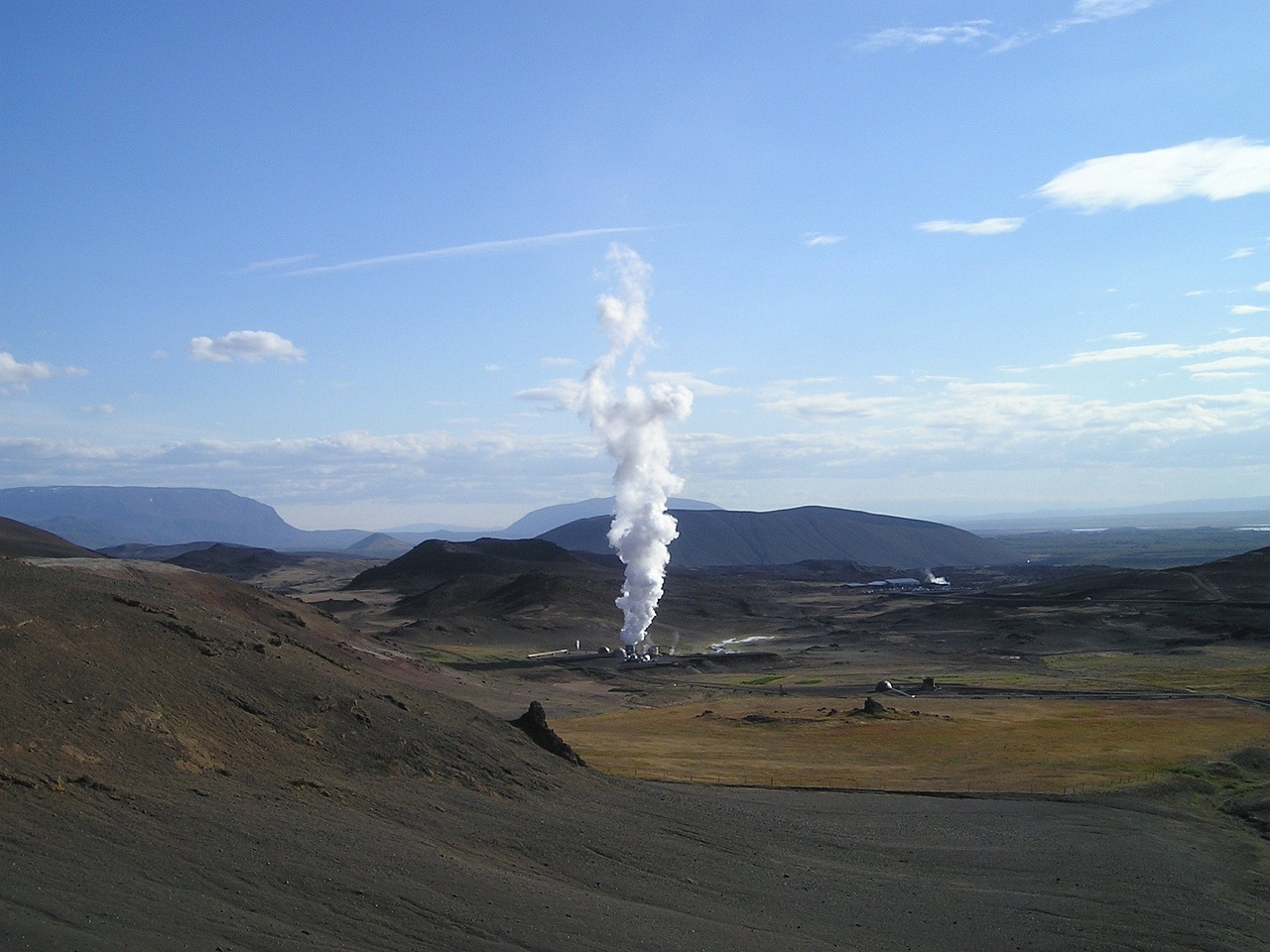
Economic Opportunities
The transition to green energy is not just about saving the planet; it's also about creating a wealth of that can transform communities and industries. As we shift away from fossil fuels, new jobs are emerging in various sectors, ranging from manufacturing to installation and maintenance of renewable energy systems. This shift is akin to opening a treasure chest filled with potential, where each job created contributes to a more sustainable and resilient economy.
Consider the solar energy sector, for instance. The installation of solar panels requires skilled labor, and as more homeowners and businesses opt for this clean energy source, the demand for qualified technicians is skyrocketing. According to recent studies, the solar industry alone has created hundreds of thousands of jobs in the last decade, and this number is expected to grow exponentially as technology advances and costs decrease.
Moreover, the wind energy sector is also experiencing a boom. Wind farms are popping up across the globe, generating not only electricity but also a multitude of job opportunities. From engineers designing turbine systems to workers maintaining the infrastructure, the economic ripple effect is significant. In fact, a report from the International Renewable Energy Agency (IRENA) suggests that renewable energy jobs worldwide could reach 24 million by 2030 if current trends continue. This is an exciting prospect that underscores the potential for job creation in the green energy sector.
In addition to direct job creation, the growth of renewable energy industries fosters economic diversification. Communities that embrace green technologies can reduce their reliance on traditional industries, which may be subject to market fluctuations. By investing in renewable resources, regions can attract new businesses, stimulate local economies, and enhance their overall economic resilience. For instance, rural areas that develop wind farms can benefit from increased tax revenues, which can be reinvested in public services and infrastructure.
However, while the potential is vast, it is crucial to address the skills gap that exists in the workforce. Many of the jobs created in the renewable energy sector require specialized training and education. Therefore, educational institutions and training programs must adapt to meet these needs. Collaborations between governments, educational institutions, and private companies can pave the way for a skilled workforce ready to tackle the challenges of a green economy.
In conclusion, the economic opportunities presented by the shift to renewable energy are not just beneficial for individuals but are essential for the health of our global economy. By investing in green technologies, we are not only combating climate change but also laying the groundwork for a sustainable future that offers jobs, innovation, and economic stability for generations to come.
- What types of jobs are created in the renewable energy sector? Jobs range from engineering and manufacturing to installation and maintenance of renewable energy systems.
- How can communities benefit economically from renewable energy? Communities can see increased job opportunities, tax revenues, and economic diversification, leading to enhanced local economies.
- What is the skills gap in the renewable energy workforce? The skills gap refers to the mismatch between the skills required for jobs in the renewable energy sector and the current workforce's qualifications.
- How can educational institutions help bridge the skills gap? By developing training programs and partnerships with industry leaders, educational institutions can equip individuals with the necessary skills for renewable energy jobs.
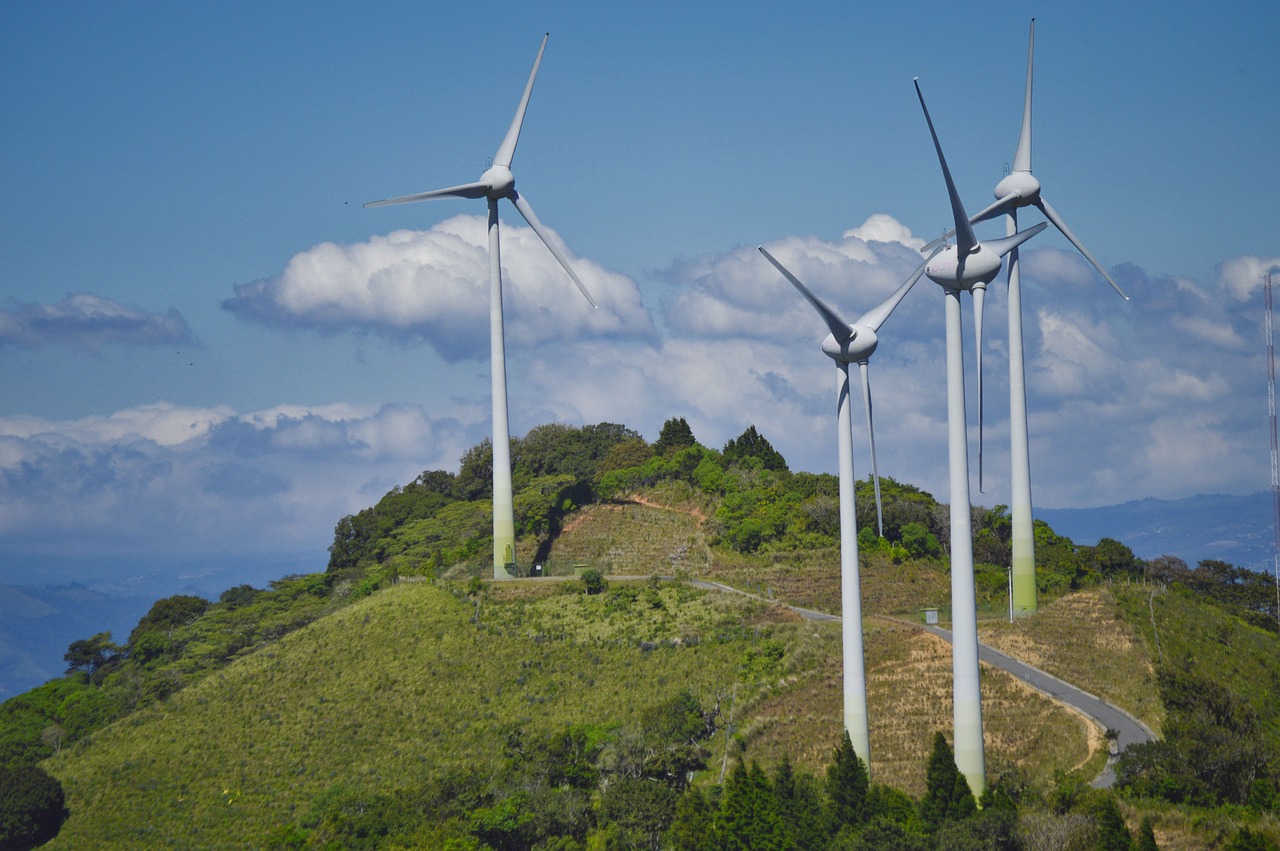
Challenges in Renewable Energy Adoption
While the shift towards renewable energy is undoubtedly a positive step for our planet, it is not without its challenges. These obstacles can often feel like mountains to climb, but understanding them is the first step towards overcoming them. One of the primary hurdles is technological limitations. Despite the remarkable advancements in renewable technologies, we still face challenges in efficiency, energy storage, and grid integration. For instance, while solar panels have become more efficient over the years, they still only convert a fraction of sunlight into usable energy. This inefficiency can be frustrating, especially when we consider how much sunlight is available.
Moreover, energy storage remains a significant issue. Imagine trying to fill a bathtub with water, but you can only store a small bucket at a time. That's similar to how current battery technologies struggle to store energy generated from renewable sources like solar and wind. To truly harness the power of these resources, we need to develop better storage solutions that can hold energy for when it's needed most.
Next, we have financial barriers. The initial investment costs for renewable energy systems can be daunting. Think of it like buying a car; while the long-term savings on gas and maintenance can be substantial, the upfront cost can deter many. This is particularly true for residential solar installations, which can be expensive despite their long-term benefits. Additionally, fluctuating market conditions can create uncertainty, making potential investors hesitant. To combat this, supportive policies and financing options are essential. Governments and financial institutions must step in to provide incentives that make renewable energy more accessible to everyone.
Another challenge lies in the regulatory landscape. In many regions, outdated regulations can hinder the adoption of renewable energy technologies. It’s like trying to fit a square peg into a round hole; existing laws may not accommodate the innovative solutions we need. Streamlining regulations and creating a more favorable policy environment can help facilitate the growth of renewable energy. This is where collaboration between governments, businesses, and communities becomes crucial.
In summary, while the challenges in renewable energy adoption may seem daunting, they are not insurmountable. By addressing technological limitations, overcoming financial barriers, and reforming regulations, we can pave the way for a sustainable energy future. The journey may be long, but with persistent effort and innovation, we can turn these challenges into opportunities for growth and progress.
- What are the main challenges in adopting renewable energy?
Technological limitations, financial barriers, and regulatory hurdles are the primary challenges faced in the widespread adoption of renewable energy. - How can we overcome financial barriers to renewable energy?
Implementing supportive policies, providing financing options, and offering incentives can help reduce the initial investment costs associated with renewable energy solutions. - Why is energy storage a significant issue?
Current energy storage technologies are not efficient enough to store large amounts of energy generated from renewable sources, which limits their usability. - How do regulations affect renewable energy adoption?
Outdated regulations can impede the implementation of innovative renewable energy solutions, making it necessary to reform policies to encourage growth in this sector.
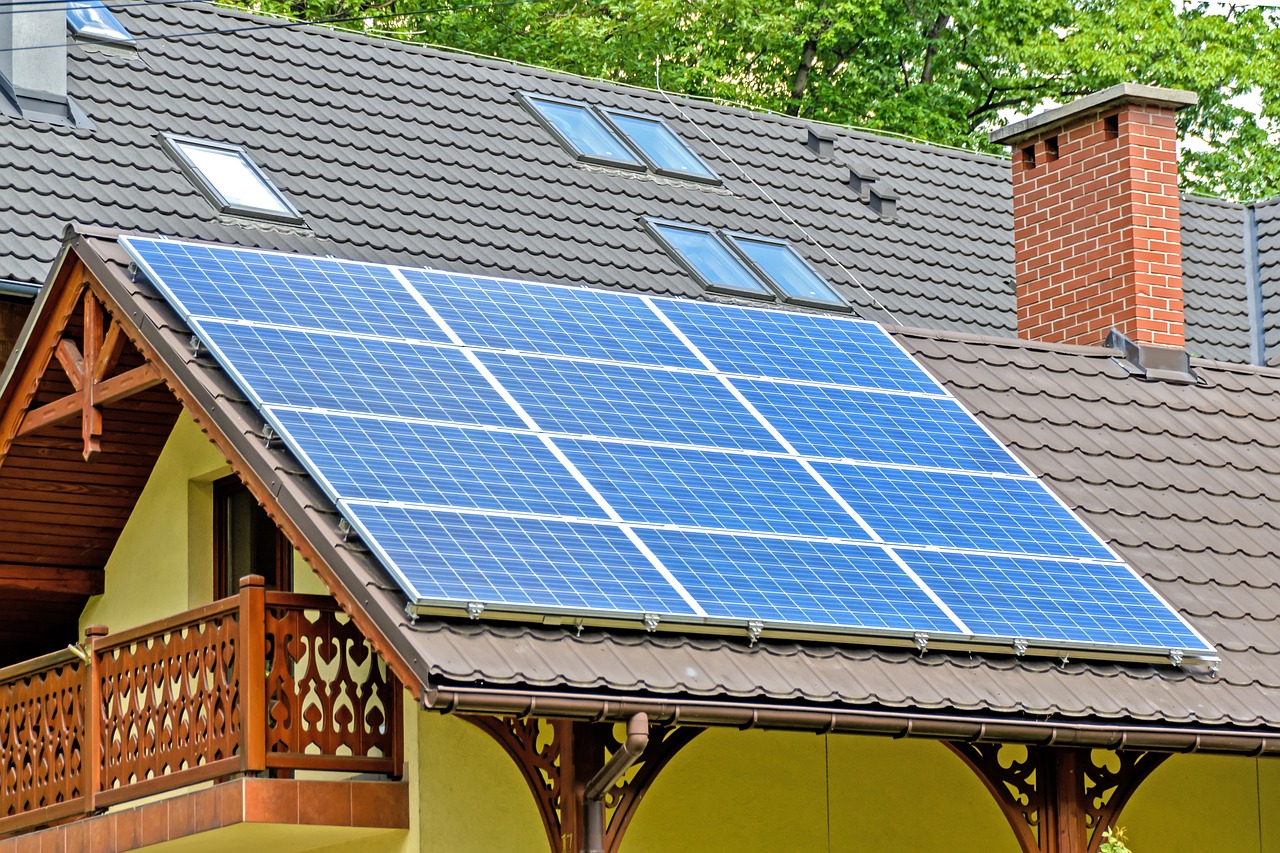
Technological Limitations
When we talk about the future of renewable energy, it’s essential to acknowledge that, despite its incredible potential, there are still significant that hinder its widespread adoption. Imagine trying to run a marathon with a backpack full of rocks; that’s somewhat akin to how renewable energy technologies operate today. They’re effective, but they still carry some weight that slows down progress.
One of the most pressing challenges is the efficiency of energy conversion. For instance, solar panels can only convert about 15-20% of the sunlight that hits them into usable electricity. While this is an improvement from earlier technologies, it still leaves a large portion of energy untapped. In contrast, fossil fuels can convert a higher percentage of their energy content into electricity, making them more attractive in some scenarios. This efficiency gap can be a significant barrier for individuals and businesses considering a switch to renewable energy sources.
Another hurdle is energy storage. Renewable energy sources like solar and wind are inherently intermittent; they produce energy only when the sun is shining or the wind is blowing. This variability creates a mismatch between energy supply and demand. Currently, battery technology is improving, but it still faces limitations in terms of capacity, lifespan, and cost. For instance, lithium-ion batteries, which are commonly used for energy storage, can be expensive and have a finite number of charge cycles before their performance declines. This is where innovative solutions, such as pumped hydro storage or grid-scale batteries, come into play, but they require substantial investment and infrastructure development.
Moreover, the integration of renewable energy into existing grids poses its own set of challenges. The current electricity grid was designed for centralized, fossil-fuel-based power generation. Transitioning to a more decentralized model that incorporates renewable sources requires significant upgrades to the infrastructure. This includes investing in smart grid technologies that can manage the flow of electricity more efficiently and accommodate the variability of renewable sources. Without these advancements, the reliability of power supply could be compromised, leading to potential outages and instability.
Lastly, there are regulatory and policy-related barriers that can stifle technological advancement. In many regions, outdated regulations may not support the integration of innovative technologies or may lack the necessary incentives for research and development in renewable energy sectors. This stagnation can lead to a slower pace of innovation, preventing the emergence of groundbreaking solutions that could address the existing technological limitations.
In summary, while the promise of renewable energy is bright, we must recognize and address these technological limitations head-on. By investing in research, improving efficiency, enhancing storage capabilities, and modernizing our energy infrastructure, we can pave the way for a more sustainable and resilient energy future.
- What are the main technological limitations of renewable energy?
The primary limitations include efficiency of energy conversion, energy storage capabilities, integration with existing grid systems, and regulatory barriers that hinder innovation.
- How does energy storage impact renewable energy adoption?
Energy storage is crucial for managing the intermittent nature of renewable sources. Without effective storage solutions, it’s challenging to meet demand when production is low.
- What advancements are being made to overcome these limitations?
Innovations in battery technology, smart grids, and regulatory reforms are being explored to enhance the efficiency, reliability, and integration of renewable energy sources.
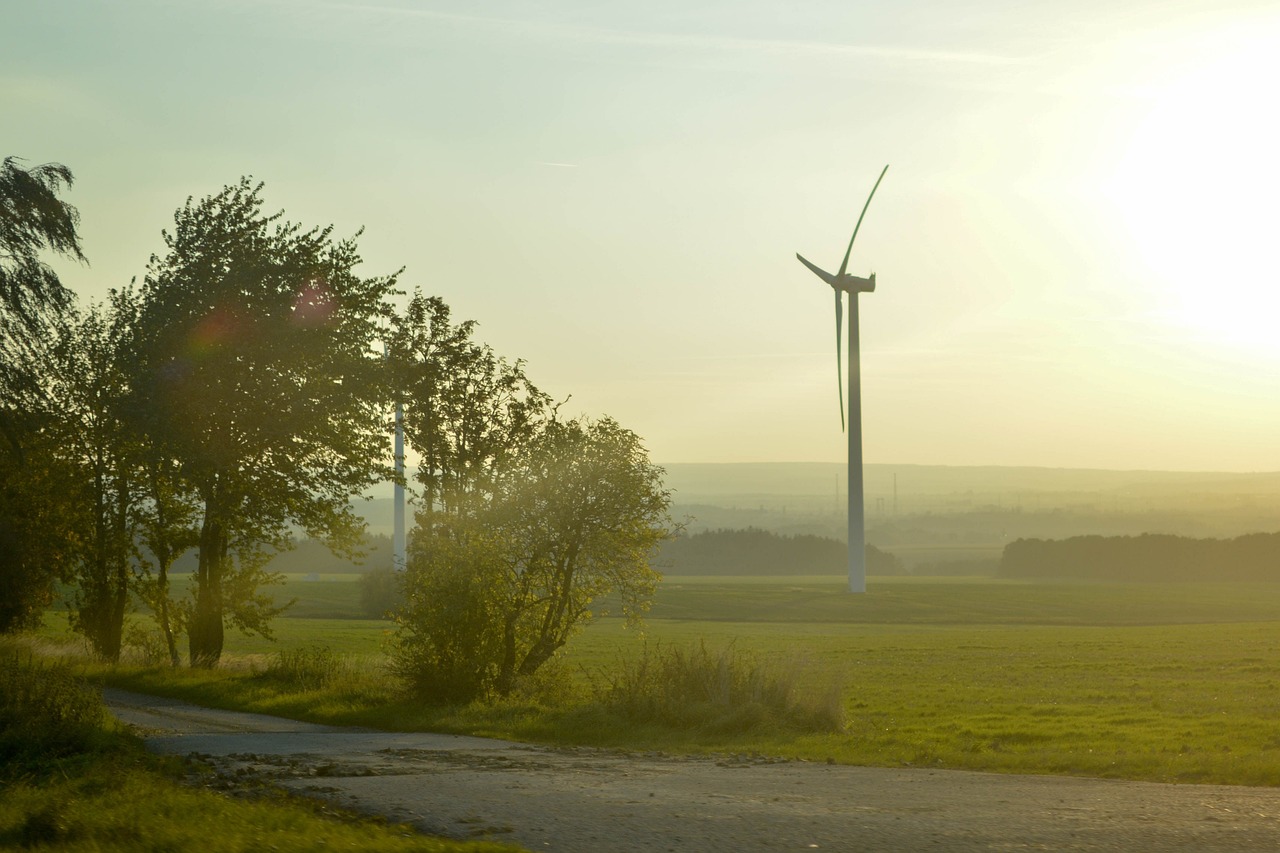
Financial Barriers
When it comes to embracing renewable energy solutions, one of the most significant hurdles is the that individuals, businesses, and even governments face. Imagine wanting to switch to a cleaner, greener energy source but feeling like you're stuck in quicksand because of costs! The initial investment for renewable technologies can be daunting. For instance, solar panels, wind turbines, and geothermal systems often require substantial upfront capital. This can deter many potential adopters who might otherwise be eager to make the switch.
In addition to the high initial costs, there are also ongoing expenses that can add up over time. These include maintenance, repair, and sometimes even the need for backup systems if the renewable source is intermittent. As a result, the financial landscape of renewable energy can be as complex as a tangled ball of yarn. Many people find themselves asking, "How can I afford this?" or "Is it really worth the investment?" These questions highlight the need for supportive policies and innovative financing options.
Moreover, fluctuating market conditions can create uncertainty in the renewable energy sector. Prices for traditional energy sources can drop, making it harder for renewable options to compete on a price basis. This volatility can lead to hesitance from investors and consumers alike. For example, if fossil fuel prices plummet, the return on investment for renewable energy projects may not seem as attractive, causing potential stakeholders to back away. To illustrate this point, consider the following table that outlines the costs associated with various renewable energy sources compared to traditional fossil fuels:
| Energy Source | Average Initial Cost (per kW) | Average Operating Cost (per kWh) |
|---|---|---|
| Solar Energy | $3,000 | $0.05 |
| Wind Energy | $1,500 | $0.01 |
| Natural Gas | $1,000 | $0.03 |
| Coal | $2,500 | $0.02 |
While the table provides a snapshot of costs, it doesn’t tell the whole story. The long-term savings and environmental benefits of renewable energy can outweigh the initial financial barriers. However, without the right incentives and financial mechanisms in place, many potential users may never get to experience those benefits. This is where government policies play a crucial role. Subsidies, tax credits, and financing programs can help bridge the gap, making renewable energy more accessible and appealing to a broader audience.
Ultimately, overcoming these financial barriers requires a collaborative effort among governments, financial institutions, and the renewable energy industry. By working together, we can create a more sustainable future that doesn’t feel like a financial burden. So, the next time you think about going green, remember that while the path may be rocky, it’s certainly worth the journey!
- What are the main financial barriers to renewable energy adoption? High initial costs, ongoing maintenance expenses, and fluctuating market conditions can deter investment in renewable technologies.
- Are there financial incentives for switching to renewable energy? Yes, many governments offer subsidies, tax credits, and financing options to make renewable energy more affordable.
- How can I calculate the return on investment for renewable energy? Consider both the initial costs and the long-term savings on energy bills, maintenance, and potential government incentives.

Future of Renewable Energy
The is not just a trend; it's a revolution that is reshaping our world. As we stand at the crossroads of innovation and necessity, the shift towards sustainable energy sources is becoming increasingly critical. With the alarming pace of climate change, the urgency to adopt renewable energy solutions has never been more pronounced. Imagine a world where our energy needs are met without the detrimental effects of fossil fuels. That's the promise of renewable energy!
Emerging technologies are paving the way for a more sustainable future. For instance, advancements in energy storage systems are crucial. These systems allow us to store excess energy generated during peak production times, ensuring a steady supply even when the sun isn't shining or the wind isn't blowing. This capability enhances the reliability of renewable sources and helps to stabilize the grid. Moreover, smart grids are revolutionizing how we distribute and manage electricity. They enable real-time monitoring and control, optimizing energy use and reducing waste.
Furthermore, the integration of renewable energy technologies into our daily lives is becoming more seamless. Take electric vehicles (EVs), for example. As more people switch to EVs, the demand for renewable energy sources to power them will surge. This creates a loop where increased adoption of clean energy leads to greater acceptance and investment in renewable technologies. It's a win-win situation!
However, the transition to renewable energy isn't without its challenges. Policymakers play a pivotal role in shaping the energy landscape. Effective policies and regulations can provide the necessary framework to encourage investment in renewable energy. Incentives such as tax credits, subsidies, and grants can lower the financial barriers that often hinder the adoption of green technologies. By fostering an environment conducive to innovation, governments can stimulate growth in the renewable sector.
To illustrate the potential growth of renewable energy, consider the following table that highlights projected increases in renewable energy capacity over the next decade:
| Year | Solar Capacity (GW) | Wind Capacity (GW) | Hydro Capacity (GW) |
|---|---|---|---|
| 2025 | 1,000 | 800 | 1,200 |
| 2030 | 1,500 | 1,200 | 1,250 |
| 2035 | 2,000 | 1,600 | 1,300 |
As you can see, the growth trajectory for renewable energy is promising. The challenge lies in ensuring that we have the infrastructure and policies in place to support this growth. The collaboration between governments, businesses, and communities is essential to create a cohesive approach to energy transition.
In conclusion, the future of renewable energy is bright and full of potential. With innovative technologies, supportive policies, and a collective commitment to sustainability, we can transition towards a cleaner, greener energy landscape. The journey may be complex, but the destination is worth it. Together, we can create a sustainable world for future generations!
- What are the main types of renewable energy? The main types include solar, wind, hydro, geothermal, and biomass energy.
- How does renewable energy benefit the environment? It reduces greenhouse gas emissions, decreases air and water pollution, and mitigates climate change.
- What challenges does renewable energy face? Key challenges include technological limitations, financial barriers, and regulatory hurdles.
- What role do policies play in renewable energy adoption? Effective policies can incentivize investment, promote innovation, and support the development of renewable energy infrastructure.
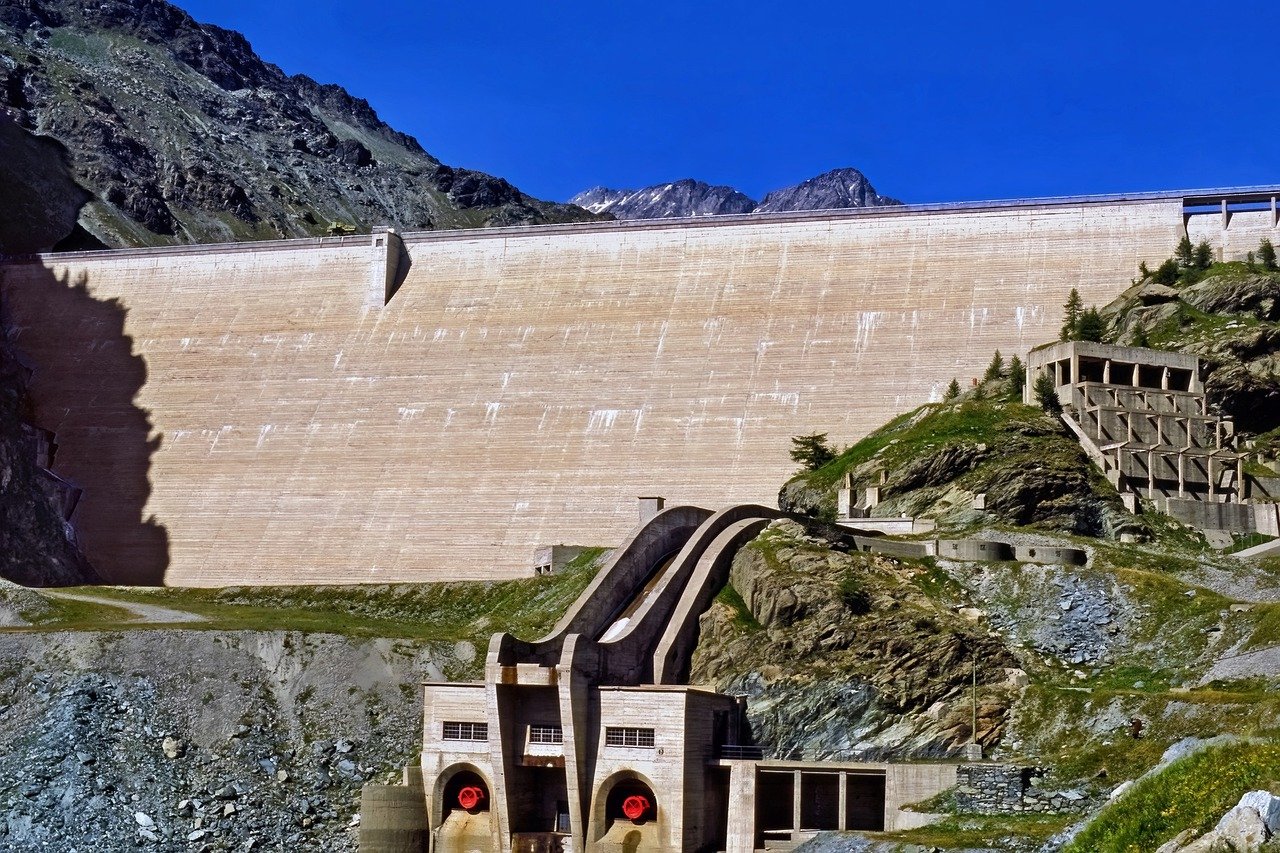
Innovative Technologies
As we venture further into the 21st century, the landscape of renewable energy is undergoing a dramatic transformation, driven by that promise to enhance efficiency and accessibility. Imagine a world where energy is not just a commodity but a sustainable resource, seamlessly integrated into our daily lives. This vision is becoming a reality thanks to groundbreaking advancements in various fields.
One of the most exciting developments is in the realm of energy storage. Traditional energy systems often struggle with the intermittent nature of renewable sources like solar and wind. However, the rise of battery technology has been a game changer. Modern lithium-ion batteries, along with emerging technologies such as solid-state batteries and flow batteries, are paving the way for more reliable energy storage solutions. These innovations not only store energy for later use but also enhance grid stability, allowing for a smoother transition to renewable sources.
Moreover, the advent of smart grids is revolutionizing how we manage and distribute energy. Imagine a network that can communicate in real-time, adjusting to changes in energy demand and supply. Smart grids utilize advanced sensors and communication technologies to optimize energy distribution, reduce waste, and improve overall efficiency. This technology not only empowers consumers to monitor their energy usage but also enables utilities to respond swiftly to fluctuations in demand, ultimately leading to a more resilient energy infrastructure.
Another area ripe for innovation is energy efficiency. Technologies such as LED lighting, smart thermostats, and energy-efficient appliances are becoming more prevalent in homes and businesses. These solutions not only reduce energy consumption but also lower utility bills, making them attractive options for consumers. Furthermore, advancements in building materials, like insulation and smart windows, are enhancing the energy performance of buildings, contributing to a significant reduction in overall energy demand.
To illustrate the impact of these innovative technologies, consider the following table that highlights the benefits of various advancements in renewable energy:
| Technology | Benefits |
|---|---|
| Battery Storage | Increases reliability, supports grid stability, enables renewable energy usage during peak demand. |
| Smart Grids | Optimizes energy distribution, reduces waste, enhances consumer engagement and energy management. |
| Energy-Efficient Appliances | Reduces energy consumption, lowers utility costs, promotes sustainable living. |
| Advanced Building Materials | Improves insulation, enhances energy performance of buildings, lowers overall energy demand. |
As we look toward the future, it’s clear that these will play a crucial role in shaping a sustainable energy landscape. They not only address the challenges of renewable energy adoption but also create new opportunities for economic growth and environmental stewardship. With ongoing research and development, the possibilities are endless. So, are we ready to embrace this energy revolution?
- What are renewable resources? Renewable resources are natural resources that can be replenished naturally over time, such as solar, wind, and hydro energy.
- How do innovative technologies impact renewable energy? Innovative technologies enhance the efficiency, reliability, and accessibility of renewable energy, making it easier to integrate into our daily lives.
- What is a smart grid? A smart grid is an electrical grid that uses digital technology to monitor and manage the transport of electricity from all generation sources to meet the varying electricity demands of end users.
- Why is energy storage important? Energy storage is crucial for balancing supply and demand, particularly with intermittent renewable sources like solar and wind, allowing energy to be stored for use when needed.

Policy and Regulation
The landscape of renewable energy is not just shaped by technological advancements and market dynamics; it is profoundly influenced by . Governments around the world play a pivotal role in determining how quickly and effectively renewable energy solutions can be adopted. Imagine a garden where the right mix of sunlight, water, and nutrients allows plants to thrive; similarly, supportive policies create the ideal conditions for renewable energy to flourish.
At the heart of this regulatory framework are incentives such as tax credits, grants, and feed-in tariffs that encourage individuals and businesses to invest in green technologies. For instance, in many regions, solar energy systems can benefit from significant tax breaks, which can substantially reduce the upfront costs for homeowners. This not only makes solar panels more accessible but also accelerates the transition towards a sustainable energy future.
Moreover, effective regulations help streamline the permitting process for renewable energy projects. Without clear guidelines, developers might face lengthy delays that can stall innovative projects. A well-defined regulatory environment fosters transparency and predictability, which are crucial for attracting investment. Just as a well-organized toolbox makes home repairs easier, a structured regulatory framework simplifies the path to renewable energy deployment.
However, it's essential to recognize that the journey towards renewable energy is not without its challenges. Inconsistent policies can lead to uncertainty in the market, causing potential investors to hesitate. For example, sudden changes in government incentives or regulations can disrupt ongoing projects and deter future investments. Therefore, it is crucial for policymakers to establish a stable and long-term vision that aligns with environmental goals while also considering economic realities.
To illustrate the impact of policy on the renewable energy sector, consider the following table:
| Policy Type | Description | Impact on Renewable Energy |
|---|---|---|
| Tax Credits | Financial incentives that reduce tax liabilities for renewable energy investments. | Encourages more individuals and businesses to adopt renewable technologies. |
| Feed-in Tariffs | Guaranteed payments for energy producers who generate renewable energy. | Provides stable income for renewable energy producers, promoting investment. |
| Renewable Portfolio Standards | Mandates that a certain percentage of energy must come from renewable sources. | Drives utility companies to invest in and develop renewable energy projects. |
In addition to these incentives, international agreements such as the Paris Agreement play a critical role in shaping national policies. Countries are increasingly held accountable for their carbon emissions, pushing them to adopt renewable energy solutions. This global perspective helps create a unified approach to combating climate change, ensuring that everyone is working towards a common goal.
In conclusion, the future of renewable energy heavily relies on robust policy and regulation. By creating an environment that supports innovation and investment, governments can not only accelerate the adoption of green energy solutions but also contribute to a healthier planet for future generations. After all, just as a solid foundation is essential for a building to stand tall, effective policies are crucial for the sustainable energy infrastructure we aspire to create.
- What are the main types of renewable energy? The main types include solar, wind, hydro, geothermal, and biomass energy.
- How do government policies affect renewable energy adoption? Supportive policies can provide incentives for investment, streamline regulations, and create a stable market environment.
- What role do international agreements play in renewable energy? They set global targets and encourage countries to commit to reducing carbon emissions, thereby promoting renewable energy adoption.
- Are there financial barriers to adopting renewable energy? Yes, high initial costs and fluctuating market conditions can make it challenging for individuals and businesses to invest in renewable technologies.
Frequently Asked Questions
- What are renewable resources?
Renewable resources are natural resources that can be replenished naturally over time. Unlike non-renewable resources, such as fossil fuels, which can be depleted, renewable resources include solar energy, wind energy, hydroelectric energy, geothermal energy, and biomass. These resources are essential for sustainable energy production and play a crucial role in combating climate change.
- How does solar energy work?
Solar energy works by capturing sunlight and converting it into electricity or heat. There are primarily two types of solar systems: photovoltaic (PV) systems, which use solar panels to convert sunlight directly into electricity, and solar thermal systems, which use sunlight to produce heat for residential heating or hot water. This clean energy source is abundant and can significantly reduce reliance on fossil fuels.
- What are the benefits of using green energy solutions?
Green energy solutions offer numerous benefits, including reduced greenhouse gas emissions, improved air and water quality, and enhanced energy independence. Additionally, the transition to renewable energy creates job opportunities in various sectors, fostering economic growth and innovation. By adopting these solutions, we can contribute to a healthier planet for future generations.
- What challenges do we face in adopting renewable energy?
While the adoption of renewable energy is growing, several challenges remain. Technological limitations, such as efficiency and storage issues, can hinder widespread use. Financial barriers, including high initial costs and market fluctuations, also pose obstacles. Addressing these challenges requires supportive policies, investment incentives, and advancements in technology.
- What does the future hold for renewable energy?
The future of renewable energy looks promising, with innovative technologies on the horizon, such as advanced energy storage solutions and smart grid systems. These advancements will improve how we harness and utilize renewable energy. Additionally, effective policies and regulations will play a critical role in promoting renewable energy adoption, ensuring a sustainable energy landscape.



















